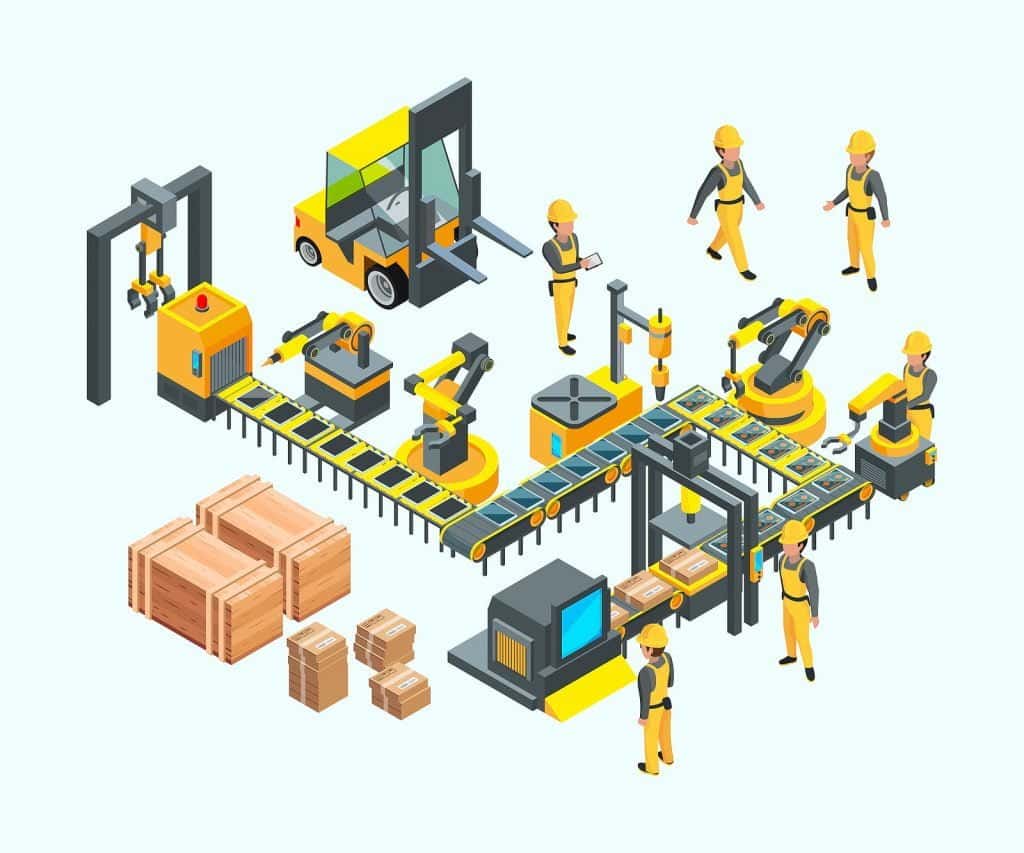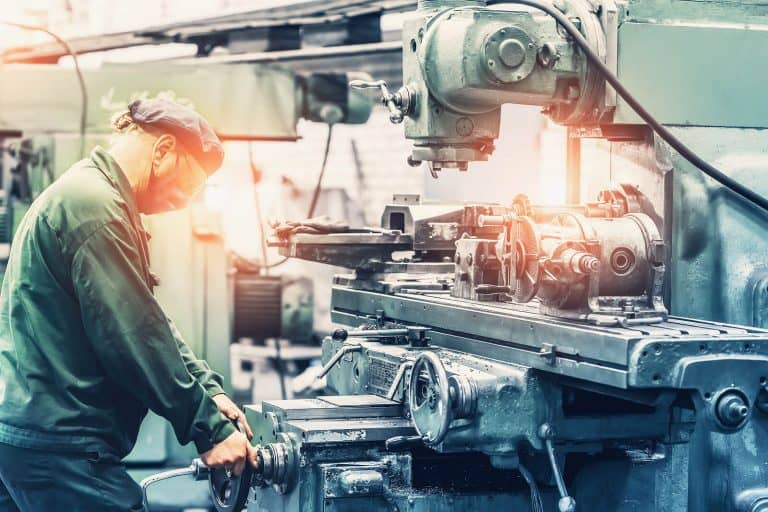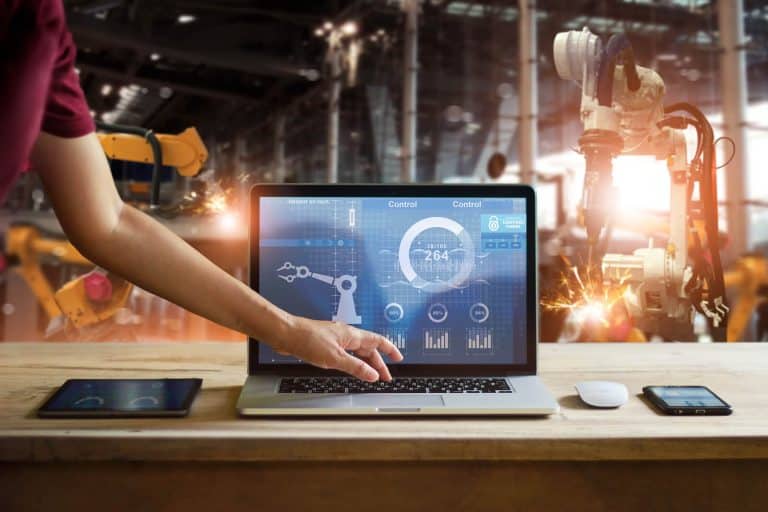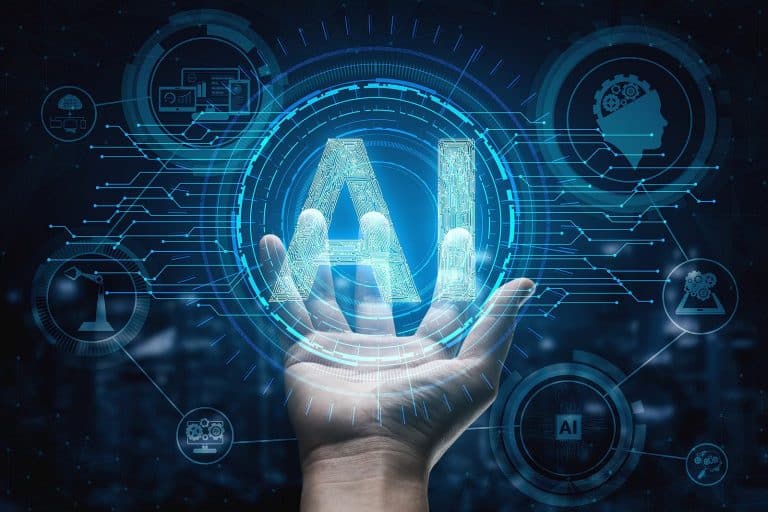Explore trends in manufacturing technology.
Table of Contents
ToggleThe use of technology in industry is nothing new. After all, advances in technology and the adoption of new techniques have been responsible for developing and improving manufacturing since the days of the first Industrial Revolution.
We’re now in what’s popularly known as the Fourth Industrial Revolution, or Industry 4.0 — and new technology has been facilitating and precipitating the changes that characterize this current era of automation, analytics, and artificial intelligence.
Current Trends in Manufacturing Technology
Recent technology has made automation more accessible to manufacturers and is changing the way that organizations operate. Easy-to-use robotics solutions, user-friendly Manufacturing Process Management (MPM) systems, and the integration of collaborative robots (co-bots) with human labor are some of the factors driving the adoption of manufacturing automation. Using automation, organizations are reducing costs, optimizing their workflows, and increasing their bottom-line — benefits which are fueling a trend towards “Automation for all.”
Other trending technologies influencing the manufacturing sector in 2020 include:
Mobile Robotics
Autonomous mobile robots or AMRs are extending sophisticated robotics capabilities to companies of all sizes. With some of the latest technology in this area, AMRs are capable of navigating on their own, with configuration software that can set them up for different payloads and customize their deployment to fit most industrial applications.
Trends in Manufacturing Technology: Internet of Things (IoT) Connectivity
With the increasing levels of interconnection between IoT components and control networks, manufacturers can now connect and monitor the various aspects of their operations, gaining insights never before possible.
Coupled with advanced analytics, smart sensors and cloud connectivity give manufacturers access to valuable data that enables them to improve safety, save money, streamline their manufacturing processes, and even create new products with IoT capabilities.
Trends in Manufacturing Technology: Enterprise Resource Planning (ERP) Technology
Cloud-based Software as a Service (SaaS) options are extending enterprise resource planning (ERP) technology to a wider range of industries, with systems that are easier to deploy and more affordable — particularly for smaller businesses.
ERP technology can help manufacturers automate the diverse areas of their operations under a single, comprehensive system. This platform provides the analytical insight and operational oversight they require to manage the entire manufacturing process and make improvements and adjustments as needed.
Manufacturing Systems with Universal Connectability
There’s a growing market in system-agnostic industrial technologies that can connect with any device or system. With the devices and their operating platforms capable of working with a wide variety of applications, technology and manufacturing advancements can now be tailor-made to an organization’s specific needs, without the cost of a fully customized solution.
Trends in Manufacturing Technology: Artificial Intelligence (AI) and Machine Learning (ML)
With their ability to recognize trends and make logical conclusions from available input, systems powered by artificial intelligence and machine learning are helping manufacturers make data-driven decisions. These decisions have positive implications in areas, including supply chain visibility, inventory management, warehouse cost reduction, asset tracking, and transportation management.
Predictive Maintenance Technology
The combination of IoT, AI, machine learning, and predictive analytics enables manufacturers to reduce costs and minimize downtime through predictive maintenance — a proactive strategy that allows organizations to identify potential issues and rectify them before they arise. Predictive maintenance also enables manufacturers to extend the life of their machinery and equipment.
High Mix, Low Volume (HMLV) Manufacturing Technologies
New technologies that touch every aspect of the manufacturing process — procurement, inventory, assembly, logistics, transportation, and sales — enable manufacturers to improve the management of their supply chains and reduce costs while delivering products to customers exactly as they want them. For example, embedding or attaching sensors and barcodes to items allows organizations to scan and track parts throughout the manufacturing and delivery process.
Additive Manufacturing or 3D Printing
Using computer-aided-design (CAD) software and 3D printers, manufacturers can now custom build parts and products for their customers by depositing materials one layer at a time. Additive manufacturing is a time and cost-saving technique that enables designers to produce models, prototypes, molds, or components for finished products.
Trends in Manufacturing Technology: Collaborative Robots (Cobots)
Despite fears that automation might lead to massive job losses, trends indicate that robots and people working together in collaboration can get more work done, more quickly, and with greater safety, in factories and warehouses. Collaborative robots or cobots can be programmed to consistently perform repetitive or hazardous work such as moving heavy objects, freeing human labor to work on more skilled or business-focused tasks.
One of the higher value applications of collaborative robots is in automated picking — when a robot is sent throughout the warehouse to grab the correct product on-demand, leaving people to do the more skill-based and customer-facing work in the fulfillment process. In traditional order fulfillment scenarios, the physical act of walking to pick up products accounts for 50% of the entire process. With an automated system, cobots can pick up four to five times the amount of goods as a human in the same time frame.
Looking Towards the Future
It may surprise you to learn that fully automated factories have been a reality for more than 15 years. In what’s known as “lights-out manufacturing,” these factories can operate autonomously and require no human presence. Since they don’t need human supervision, they don’t require lighting and can consist of several machines functioning in the dark — hence, the “lights-out” reference.
For example, Japanese robotics maker FANUC has been operating a “lights-out” factory since 2001, in which robots build other robots completely unsupervised, for nearly a month at a time. And in June 2018, the Chinese eCommerce giant JD.com unveiled a fully automated storage and shipping facility in Shanghai, run by 20 industrial robots.
Future technologies impacting the industrial sphere include:
AI in Product R&D
Testing and iteration are the essences of research and development — and with top research talent distributed around the globe, software systems powered by artificial intelligence are giving organizations access to that talent pool. On-demand science platforms like Science Exchange are currently working across a number of verticals and allow corporations to quickly outsource their R&D requirements.
Companies in the high-tech manufacturing arena are exploring robotics, 3D printing, and artificial intelligence as avenues to improve the R&D process and help reduce uncertainty when going into production.
Trends in Manufacturing Technology: Combined Robotics and 3D Printing
3D printing facilitates rapid prototyping, which allows organizations to see what a future concept looks like before committing resources to its further production. At the same time, robotics is automating the physical process of trial-and-error across a wide range of industry verticals.
As an example, in R&D for synthetic biology, robotics is enabling companies like Zymergen and Ginkgo Bioworks (which manufacture custom chemicals from yeast microbes) to perform high-throughput experimentation to arrive at a winning combination of samples more quickly and with less human error.
Chip manufacturers like Intel and Samsung have some of the largest R&D budgets in the world. As semiconductors continue to shrink in size, working at nanoscale requires precision and analytics beyond the capability of humans, making robotics the preferred option.
Augmented Reality (AR) And Virtual Reality (VR) Modeling
In future manufacturing processes, augmented reality and virtual reality could reduce manufacturers’ reliance on prototyping with computer-aided design (CAD) software and 3D printed physical models.
For example, Apple has unveiled a patent that envisions AR “overlaying computer-generated virtual information” onto real-world views of existing objects, effectively enabling industrial designers to make 3D-printed “edits” onto existing or unfinished objects.
A researcher at Cornell University has recently demonstrated the ability to sketch with AR / VR while 3D printing. In the future, this could lead to the development of human-computer interfaces that enable the sculpting of 3D models in real-time.





